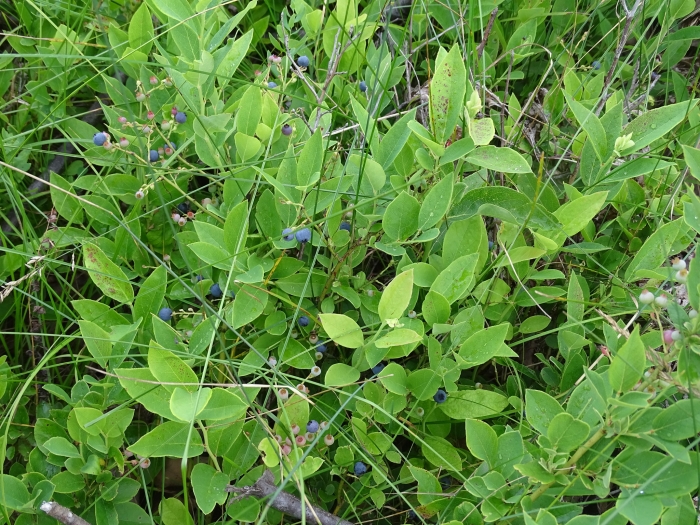Blue Ridge Blueberry
(Vaccinium pallidum)
Blue Ridge Blueberry (Vaccinium pallidum)
/
/

Reuven Martin
Public Domain


















































Estimated Native Range
Summary
Blue Ridge Blueberry is valued for its edible berries, which are a food source for wildlife and can be used in culinary applications. It is also appreciated for its ability to thrive in poor soils and its low maintenance requirements. In cultivation, it is used for naturalistic plantings, as a ground cover, or in wildlife gardens. It prefers full sun but can tolerate part shade and is adaptable to a range of soil types, including dry, rocky, sandy, gravelly, and heavy clay soils. While generally disease-resistant, it can suffer from common blueberry pests and diseases such as blueberry maggot and fungal infections.CC BY-SA 4.0
Plant Description
- Plant Type: Shrub
- Height: 1-3 feet
- Width: 2-3 feet
- Growth Rate: Moderate
- Flower Color: White, Pink
- Flowering Season: Spring
- Leaf Retention: Deciduous
Growth Requirements
- Sun: Full Sun, Part Shade
- Water: Low
- Drainage: Slow, Medium, Fast
Common Uses
Bee Garden, Bird Garden, Butterfly Garden, Drought Tolerant, Edible*Disclaimer: Easyscape's listed plant edibility is for informational use. Always verify the safety and proper identification of any plant before consumption., Fire Resistant, Groundcover, Hummingbird Garden, Low Maintenance, Salt Tolerant
Natural Habitat
Dry, open oak and pine woodlands, forest edges, and clearings
Other Names
Common Names: Hillside Blueberry, Early Lowbush Blueberry, , Hilllside Lowbush Blueberry, Dryland Blueberry, Hillside Blueberry, Late Lowbush Blueberry, Pale Blueberry, Hillside Lowbush Blueberry, Blueberry
Scientific Names: , Vaccinium pallidum, Vaccinium vacillans, Vaccinium torreyanum, Vaccinium pennsylvanicum, Vaccinium alto-montanum, Vaccinium viride, Vaccinium missouriense, Vaccinium vacillans var. crinitum, Vaccinium corymbosum var. pallidum
GBIF Accepted Name: Vaccinium pallidum Aiton